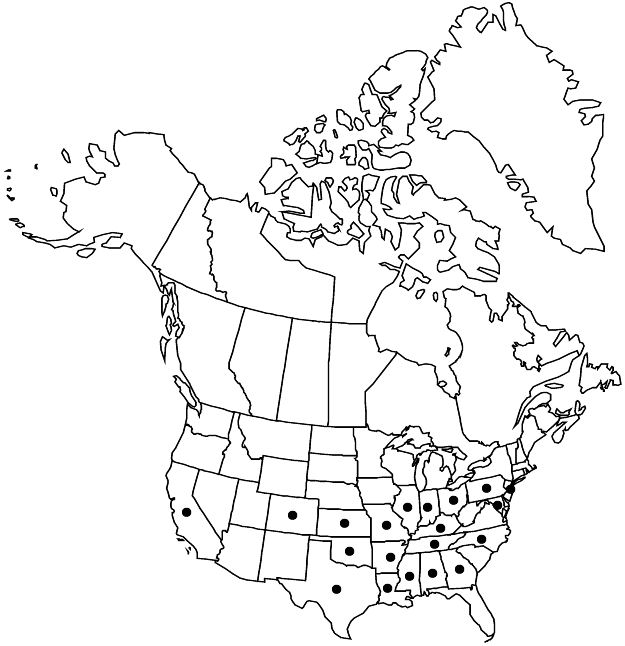Prunus rivularis
Linnaea 21: 594. 1848.
Shrubs or trees, usually suckering, 10–80 dm, thorny. Twigs with axillary end buds, glabrous. Leaves deciduous; petiole 7–21 mm, glabrous or sparsely hairy on adaxial surface, glandular distally, glands 1–4; blade lanceolate, oblong-lanceolate, or elliptic to narrowly elliptic, usually folded along midribs, 4–11 × 1.5–5 cm, base obtuse to rounded, margins singly to doubly crenate-serrulate, teeth blunt, glandular, glands inconspicuous, blackish, apex usually acuminate, sometimes acute, abaxial surface glabrous or ± hairy along midribs and veins, adaxial usually glabrous, rarely midribs hairy. Inflorescences 2–4-flowered, umbellate fascicles. Pedicels 3–15 mm, glabrous. Flowers blooming before or at leaf emergence; hypanthium campanulate, 2–3 mm, usually glabrous, rarely glabrate, externally; sepals broadly spreading to reflexed, oblong-ovate, 1.5–2.5 mm, margins glandular-toothed, abaxial surface glabrous or sparsely hairy, adaxial densely hairy at bases; petals white, obovate, 4–7 mm; ovaries glabrous. Drupes usually red, sometimes yellowish orange, with white dots, not or only slightly glaucous, globose, 12–25 mm, glabrous; mesocarps fleshy; stones ovoid to subglobose, ± flattened.
Phenology: Flowering Mar–Apr; fruiting Jul–Sep.
Habitat: Stream banks, roadside thickets, prairie hillsides, borders of woods
Elevation: 200–1000 m
Distribution

Ala., Ark., Calif., Colo., Ga., Ill., Ind., Kans., Ky., La., Md., Miss., Mo., N.J., N.C., Ohio, Okla., Pa., Tenn., Tex.
Discussion
Prunus munsoniana is here placed in synonymy with P. rivularis, greatly expanding the range of the latter compared to its traditional treatment. Descriptions of P. munsoniana and P. rivularis differ mostly in size of the plants, leaves, and floral structures. As suggested by G. M. Diggs et al. (1999), P. munsoniana is simply a larger version of P. rivularis.
Evidence from analysis of DNA sequences of two nuclear genes in native plums (J. R. Rohrer et al. 2008) indicates that Prunus rivularis may be an allopolyploid. Three plants sequenced from Texas contained alleles seemingly derived from P. angustifolia on the one hand and P. hortulana (or P. murrayana) on the other. Further, two individuals determined as P. munsoniana, one each from Pennsylvania and Texas, had sequences very similar to those of P. rivularis.
Other specimens in herbaria labeled as Prunus munsoniana include hybrids between P. americana and P. angustifolia, as well as individuals of P. hortulana that bloom before the leaves emerge or that sucker freely.
Selected References
None.